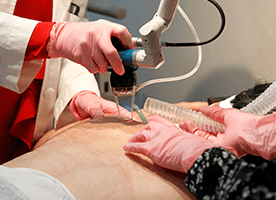Scars affect our lives. What do we know about them?
Scroll to: Scar Types | Scar Treatment Options
At Lumenis, we realize that many people afflicted by scars lack general information about scars. What causes scarring? What types of scars are there? What are the common treatment methods? The following general information page sheds some light on this complex medical condition.
What are scars and why do they appear?
A scar is the body’s natural healing response to replace lost or irreversibly damaged skin. In cases of severe damage, the skin cannot restore itself to its previous condition. Scars may result from infections, surgery, injuries, or inflammation of tissue, burns.
The new tissue that replaces normal skin is of a harder texture, different color, etc. This is called a scar.

Scars are extremely diverse. Their texture, color and severity changes from one person to the next, based on parameters such as age, skin tone, skin condition and more, not to mention the type and severity of skin trauma. In extreme cases, scars have been known to affect their bearers’ self-esteem and emotional state.
Atrophic Scars
Atrophic scars appear as “pits” within the skin. The “pits” are caused due to damage to fat and muscle. Acne and chickenpox scars are atrophic, and therefore individuals with facial atrophic scars are quite common.
Hypertrophic Scars
Hypertrophic scars appear as skin “lumps” above the normal skin, and are usually of a darker reddish color. They are caused by an excessive generation of tissue, due to the skin healing process after wounds or injuries.
Keloid Scars
Like Hypertrophic scars, Keloid scars form due to wounds or injuries and are raised above the skin. Yet they tend to extend further than the original wound or injury, and can most commonly be found on specific body parts, such as the chest, back, ears and shoulders and are more prevalent among skin of color.
Burn scars are usually more extended, stiffer and thicker than other types of raised scars such as Keloid or Hypertrophic scars. They can be red or without the natural skin color.
Most common causes of burn scars are:
- Fire flames
- Electricity
- Chemicals
- Sunrays
- Boiling liquid
Burn scar damages are commonly classified into four categories:
- First degree burns: red, non-blistered skin
- Second degree burns: blisters and some thickening of the skin
- Third degree burns: widespread thickness with a white, leathery appearance
- Fourth degree burns: third degree burn damage extends to the bones and tendons
What are the common scar treatment options?
PB-2008102 Rev A


















 Find Scar Treatment Provider
Find Scar Treatment Provider